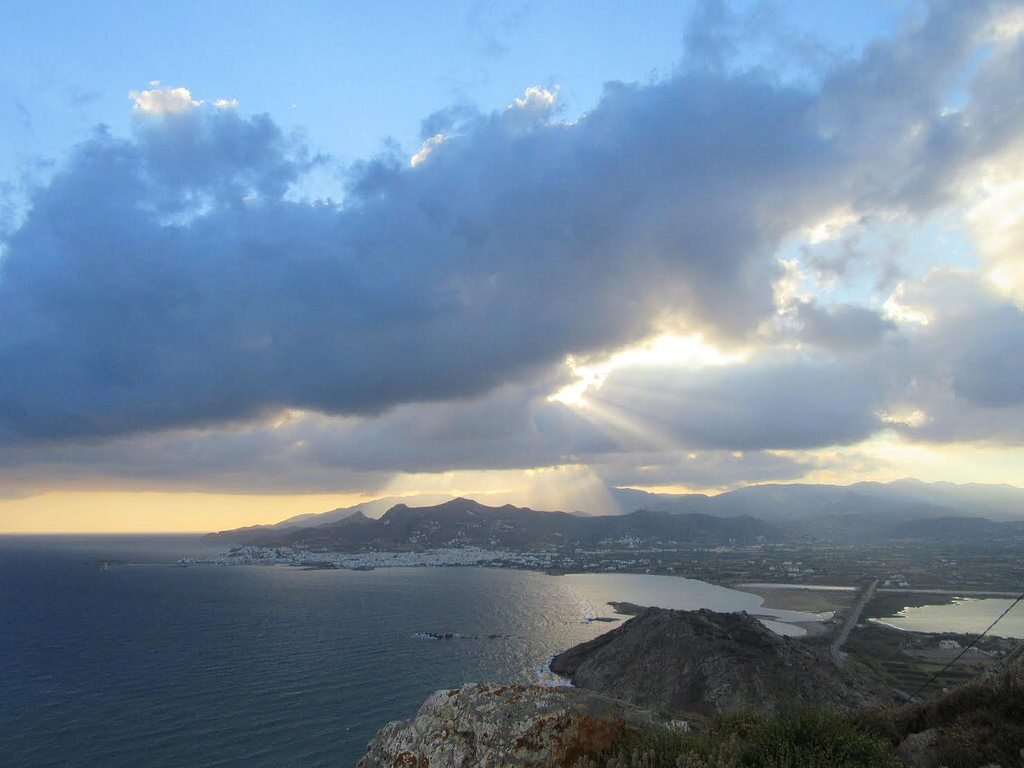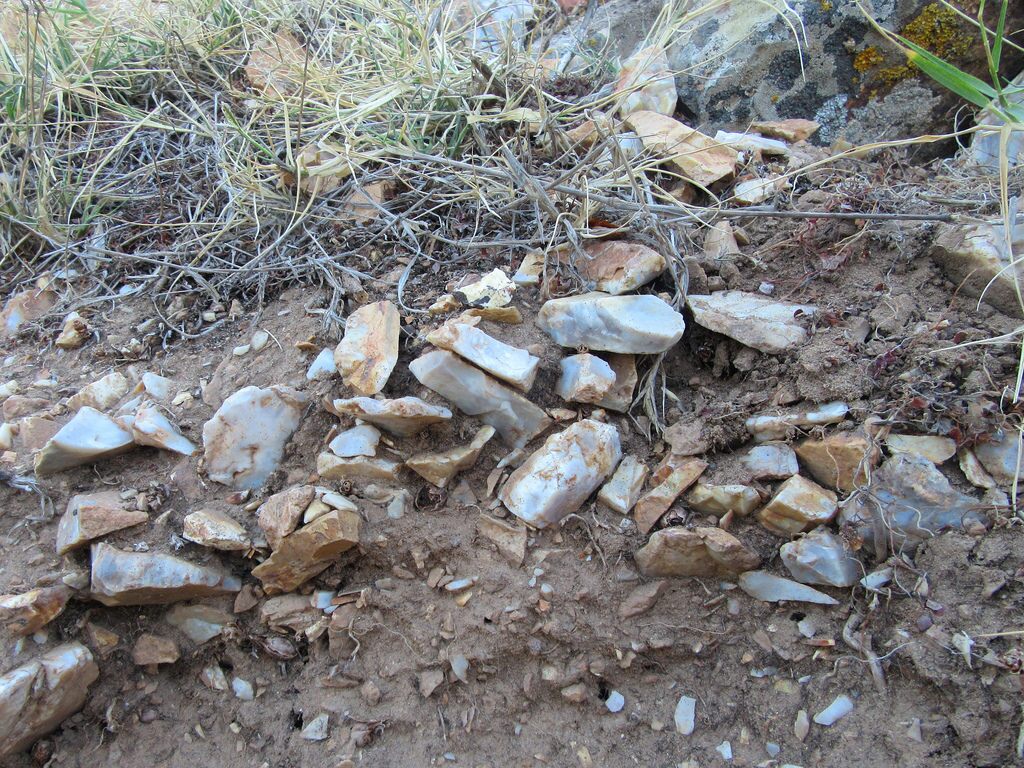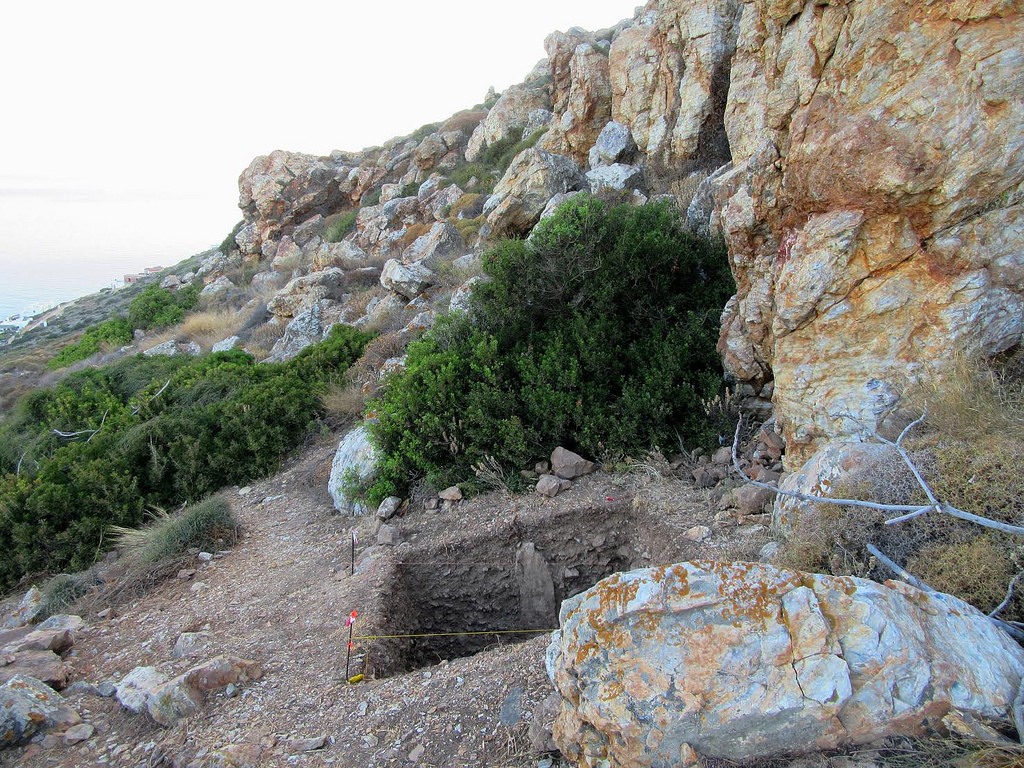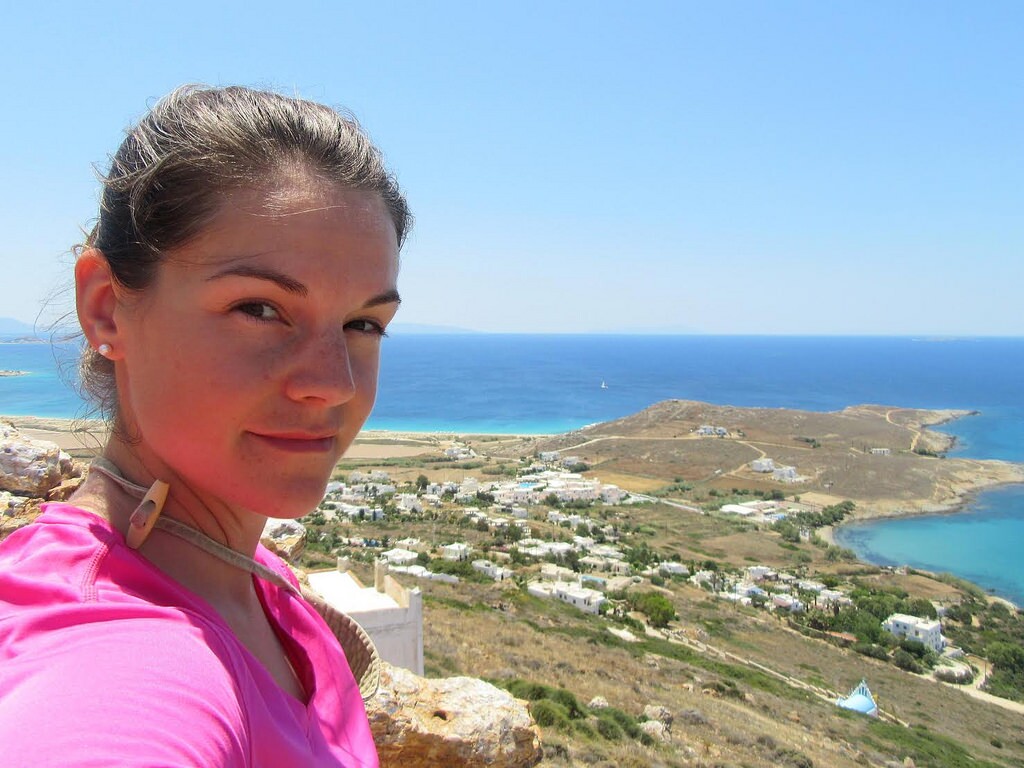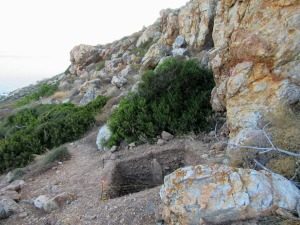
The island of Naxos, Greece—A small group of human-like creatures ascend a hill that overlooks a grassy plain. The pinnacle of the hill commands an impressive view of the land below, with perhaps a view of the distant ocean along the horizon to the west.
But they’re not climbing for the view.
They’re climbing to get their hands on special rocky outcroppings along the way — outcroppings of chert — perfect for making tools and weapons critical for survival.
Some of these places have been picked over for thousands of years already. Their ancestors knew of this hill and passed that knowledge on to their descendants, who continued a tradition of extracting its seemingly inexhaustible supply of valuable stone that would prove to sustain generations of future groups for many thousands of years.
Fast forward
“The hill itself is basically one big chert source where people came to get raw material for making stone tools since the Paleolithic and through to the Mesolithic,” says archaeologist Kate Leonard. Kate is a young Canadian archaeologist who was excavating with a team of her colleagues at the hill site in June of 2016. “What is being found in the excavations are the leftovers from thousands and thousands of years of removing chert from the outcrops and the roughing out of stone tools.”
First discovered in 1981 as part of a survey by the École Française d’Athènes under the direction of René Treuil, the site, known as Stélida, is a 118m high hill on the west of cape of Aghios Prokopios, located on the northwest coast of the large Cyclades island of Naxos. Today the hill is situated on a promontory that juts out into the Aegean, and if one stands at its pinnacle, one can view a vista of the coastline and the Aegean Sea toward the west, separating Naxos from its neighboring island, Paros, clearly seen in the distance. The initial survey identified the site as a significant source of chert, a raw material that was commonly used by prehistoric humans and hominins for producing stone tools and weapons. Beginning in 2013, an international team led by Dr. Tristan Carter of McMaster University through the Canadian Institute in Greece, and his co-director Dr. Demetris Athanasoulis of the Cycladic Ephorate of Antiquities of the Hellenic Republic’s Ministry of Culture and Sports, conducted a series of ongoing excavations on the hill. Known as the Stélida Naxos Archaeological Project (SNAP), excavations have uncovered thousands of lithic material (mostly stone debitage), that indicate the site was in use for tens of thousands of years as a place to acquire and manufacture simple stone tools. “Identifying the lithic material was initially a challenge for me,” says Leonard. “When you are excavating a very early site that was a raw material source you don’t necessarily find all the lovely (easily identified) stone tools that would be found on a habitation site. What you do find is the leftovers from making these stone tools.”
And the leftovers have been nearly overwhelming. In fact, says Leonard, “there is so much lithic material being found at Stélida that the team struggles to wash it so the lithic specialist can look it over and inform the team about any diagnostic pieces being uncovered.”
_________________________________________
A view of Naxos from the hill site. Courtesy Kate Leonard
______________________________________________________
Stone tools in situ at Stélida. Courtesy Kate Leonard
______________________________________________________
The implications
According to the scientists, many of the diagnostic pieces, although not an indicator for direct or absolute dating, do suggest a possible date range of hominin occupation or use going back as far as the Middle Paleolithic. Says Leonard, “There is tantalizing evidence for activity at Stélida in the form of possible bifaces that could be interpreted as handaxes; these large heavy tools could have been made by Homo heidelbergensis, the predecessor of the Neanderthals in Europe. The possibility for evidence of these early hominids living on what are now the Cycladic islands has not been seriously investigated before.”
This characteristically Paleolithic material, and the site’s location on an island in the Aegean, also present possible implications for ancient migration of humans and their ancestors in this part of the world.
“Stélida is the earliest known archaeological site in the Cycladic region and when the area was first reached by hominins the landscape would have been much different to now,” says Leonard. “When I looked out from my excavation trench towards the coast I could see the Aegean Sea separating Naxos from its neighbor to the west, the island of Paros. Scientific investigations into the ancient environment suggest that these two islands were joined to a few others as part of one big island known as the ‘Cycladean Island’ during the glacial maximum (the stage of the Ice Age when the maximum amount of sea water was trapped in glaciers). Tens of thousands of years ago when people climbed the hill at Stélida to reach the chert outcrops they would have been looking out over a grassy plain, an estuary or even a lagoon, with the sea many kilometers away. But even still, this ‘mega-island’ was an island and a body of water had to be crossed to reach it from mainland Europe.”
__________________________________________
A view of the trench, where Leonard was excavating. Courtesy Kate Leonard
___________________________________________________________
Could early humans, or perhaps even their hominin forerunners, have crossed over to the island on boats, or some other natural or contrived device that would float them across from the mainland?
Further research may help answer this question. It could play a significant role in uncovering new pieces to the puzzle of hominin dispersal in colonizing the globe. Leonard feels privileged to have been a part of this effort: “This exciting groundbreaking research is investigating a previously overlooked region of Greece for possible alternative routeways for Homo sapiens and their ancient predecessors’ movements from Asia into Europe.”
Moving on
Leonard’s time with SNAP was brief, as she is engaged in a global year-long journey to work at twelve different archaeological sites in 12 separate countries. She calls her project Global Archaeology: A Year of Digs. Stélida now makes the 6th stop on her global trek.
Popular Archaeology will be following and reporting on Leonard’s worldwide experiences periodically throughout 2016 as she hops from one location to another during her global journey. To continue the work, however, Leonard will need financial support from donors. Readers interested in reading about and supporting her self-directed Global Archaeology crowdfunded project can learn more at gofundme.com/globalarchaeology.
See more about Leonard’s experience with the Stélida Naxos Archaeological Project here, and you may also read more about the site and the project at its website.
________________________________________
Archaeologist Kate Leonard, from the top of the chert outcrop. Courtesy Kate Leonard
______________________________________________________

______________________________________________
Travel and learn with Far Horizons.
____________________________________________
This richly illustrated issue includes the following stories: Recent findings shedding new light on the whereabouts of the remains of Philip of Macedon, father of Alexander the Great; how an archaeologist-sculptor is bringing bones of the dead back to life; archaeologists uncovering town life at the dawn of civilization; an exclusive interview with internationally acclaimed archaeologist James M. Adovasio about what makes the Meadowcroft Rockshelter prominent in the ongoing search for the first Americans; what archaeologists are finding at the site of the ancient city of Gath, the home town of the biblical Philistine giant, Goliath; and how scientists are redrawing the picture of human evolution in Europe. Find it on Amazon.com.

